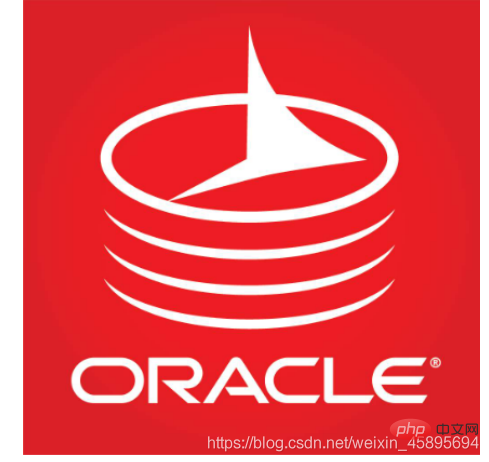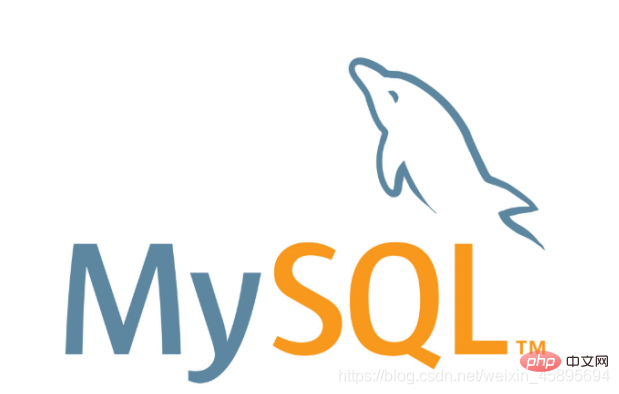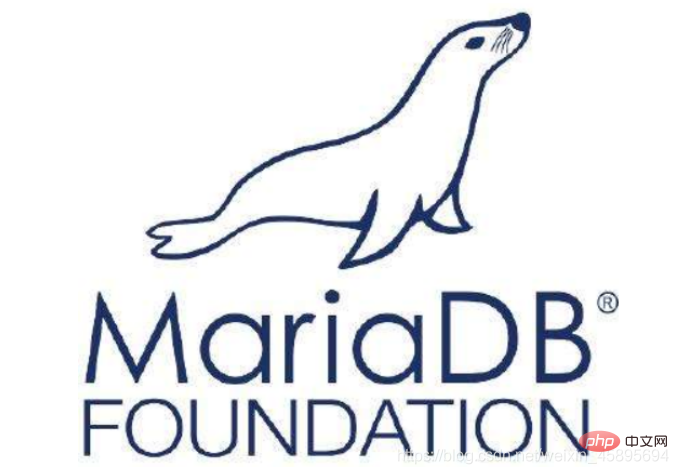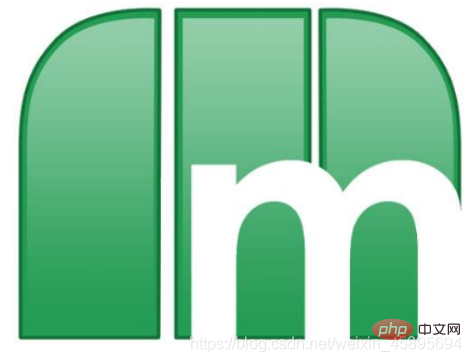What are the databases under Linux?
The databases under Linux include: 1. Oracle; 2. MySQL; 3. MariaDB; 4. SQL Server; 5. Memcached, "Key-Value" type database; 6. Redis, "Key-Value" type Database; 7. MongoDB, etc.

The operating environment of this tutorial: Red Hat Enterprise Linux 6.1 system, Dell G3 computer.
What is a database?
A database is a warehouse that stores computer data. This warehouse organizes and stores data according to a certain data structure (data structure refers to the organizational form of data or the relationship between data). It can be Databases provide a variety of methods to manage the data within them.
Common relational databases under Linux
1. Oracle Database

Oracle, formerly known as SDL, was founded in 1977 by Larry Ellison and two other programmers. They developed their own flagship products and sold them in large quantities on the market. , In 1979, Oracle introduced the first commercial SQL relational database management system. Oracle is one of the earliest vendors to develop relational databases, and its products support the widest range of operating system platforms. Currently, Oracle's relational database products have one of the highest market shares.
Oracle (Oracle) is currently the world's largest database software company, and it is also a software provider and service provider with extremely rapid business growth in recent years.
Main application scope: traditional large enterprises, large companies, government, finance, securities, etc.
2. MySQL database

3、MariaDB Database

4、SQL Server database

Microsoft SQL Server It is a large-scale relational database system developed by Microsoft. 1987 In , Microsoft and IBM Completed cooperative development become OS/2 , IBM in which it is sold OS/2 Extended Edition Bind in the system OS/2 DatabaseManager , and micro There is still a lack of database products in the soft product line. To this end, Microsoft has set its sights on Sybase ,same Sybase signed a cooperation agreement to enable use Sybase The technology development is based on OS/2 The platform’s relational database. 1989 In , Microsoft released SQLServer1.0 Version. SQL Server It has comprehensive functions and high efficiency, and can be used as a database platform for medium-sized enterprises or units. SQL Server Can Windows The operating system is tightly integrated, both in terms of application development speed and system transaction processing operation. The running speed can be greatly improved. SQL Server The disadvantage of is that it can only be used in Windows system.
Main application scope: Some corporate e-commerce (CCTV shopping), use windows Server platform enterprise.
Non-relational database management systems commonly used under Linux
1. Memcached (Key-Value)

Memcached is an open source, high-performance caching system with distributed memory objects. It can reduce database load and accelerate dynamic Web Application, originally released by LiveJoumal of Brad Fitzpatrick exist 2003 Years of development completed. Currently, many users around the world are using it to build their own large-load websites or improve the response speed of their high-visited websites. Spend. Notice: Memcache is the name of this project, and Memcached is the main program file name on the server side.
The cache is generally used to save some frequently accessed objects or data (for example, the browser will cache frequently visited web pages. ), accessing objects or data through cache is much faster than accessing on disk. The former is memory and the latter is disk. Memcached is a pure memory caching system that caches frequently accessed objects or data in Memcached In the memory of , These cached data are passed by the program API is accessed in the form of , Memcached The data inside is like a huge HASH
Table, data starts with Key-Value The right way exists. Memcached By caching frequently accessed objects or data, it reduces the pressure of frequently reading the database and improves the response speed of the website. .
Official: http://Memcached.org/
Since Memcached is a pure memory caching software, all data will be lost once restarted. Therefore, Sina has developed an open source project MemcacheDB based on Memcached. By adding Berkeley DB's persistent storage mechanism and asynchronous primary and secondary replication mechanisms to Memcached, Memcached has transaction recovery capabilities, persistent data storage capabilities, and distributed replication capabilities. However, in recent years, it has been gradually replaced by other persistence products, such as Redis.
2. Redis (Key-Value)

Redis is a Key-Value type storage system. However, Redis supports relatively more storage value types, including string (string), list (linked list), set (collection) and zset (ordered set), etc. These data types support push/pop, add/remove, intersection, union, difference and richer operations, and these operations are all atomic. On this basis, Redis supports various different ways of sorting. Like Memcached, Redis data is cached in memory to ensure efficiency. The difference is that Redis will periodically write updated data to disk or write modification operations to additional record files, and on this basis, Master-Slave (master-slave) synchronization is achieved.
Redis is a high-performance Key-Value database. The emergence of Redis has largely compensated for the shortcomings of Key-Value storage such as Memcached, and can be a good supplement to relational databases in some situations. It provides PythonRuby, Erlang, and PHP clients, which are very convenient to use.
Official: http://www.Redis.io/documentation
Features:

##3. MongoDB (Document-Web)

Linux Video Tutorial"
The above is the detailed content of What are the databases under Linux?. For more information, please follow other related articles on the PHP Chinese website!

Hot AI Tools

Undresser.AI Undress
AI-powered app for creating realistic nude photos

AI Clothes Remover
Online AI tool for removing clothes from photos.

Undress AI Tool
Undress images for free

Clothoff.io
AI clothes remover

AI Hentai Generator
Generate AI Hentai for free.

Hot Article

Hot Tools

Notepad++7.3.1
Easy-to-use and free code editor

SublimeText3 Chinese version
Chinese version, very easy to use

Zend Studio 13.0.1
Powerful PHP integrated development environment

Dreamweaver CS6
Visual web development tools

SublimeText3 Mac version
God-level code editing software (SublimeText3)

Hot Topics
 deepseek web version entrance deepseek official website entrance
Feb 19, 2025 pm 04:54 PM
deepseek web version entrance deepseek official website entrance
Feb 19, 2025 pm 04:54 PM
DeepSeek is a powerful intelligent search and analysis tool that provides two access methods: web version and official website. The web version is convenient and efficient, and can be used without installation; the official website provides comprehensive product information, download resources and support services. Whether individuals or corporate users, they can easily obtain and analyze massive data through DeepSeek to improve work efficiency, assist decision-making and promote innovation.
 How to install deepseek
Feb 19, 2025 pm 05:48 PM
How to install deepseek
Feb 19, 2025 pm 05:48 PM
There are many ways to install DeepSeek, including: compile from source (for experienced developers) using precompiled packages (for Windows users) using Docker containers (for most convenient, no need to worry about compatibility) No matter which method you choose, Please read the official documents carefully and prepare them fully to avoid unnecessary trouble.
 BITGet official website installation (2025 beginner's guide)
Feb 21, 2025 pm 08:42 PM
BITGet official website installation (2025 beginner's guide)
Feb 21, 2025 pm 08:42 PM
BITGet is a cryptocurrency exchange that provides a variety of trading services including spot trading, contract trading and derivatives. Founded in 2018, the exchange is headquartered in Singapore and is committed to providing users with a safe and reliable trading platform. BITGet offers a variety of trading pairs, including BTC/USDT, ETH/USDT and XRP/USDT. Additionally, the exchange has a reputation for security and liquidity and offers a variety of features such as premium order types, leveraged trading and 24/7 customer support.
 Ouyi okx installation package is directly included
Feb 21, 2025 pm 08:00 PM
Ouyi okx installation package is directly included
Feb 21, 2025 pm 08:00 PM
Ouyi OKX, the world's leading digital asset exchange, has now launched an official installation package to provide a safe and convenient trading experience. The OKX installation package of Ouyi does not need to be accessed through a browser. It can directly install independent applications on the device, creating a stable and efficient trading platform for users. The installation process is simple and easy to understand. Users only need to download the latest version of the installation package and follow the prompts to complete the installation step by step.
 Get the gate.io installation package for free
Feb 21, 2025 pm 08:21 PM
Get the gate.io installation package for free
Feb 21, 2025 pm 08:21 PM
Gate.io is a popular cryptocurrency exchange that users can use by downloading its installation package and installing it on their devices. The steps to obtain the installation package are as follows: Visit the official website of Gate.io, click "Download", select the corresponding operating system (Windows, Mac or Linux), and download the installation package to your computer. It is recommended to temporarily disable antivirus software or firewall during installation to ensure smooth installation. After completion, the user needs to create a Gate.io account to start using it.
 Ouyi Exchange Download Official Portal
Feb 21, 2025 pm 07:51 PM
Ouyi Exchange Download Official Portal
Feb 21, 2025 pm 07:51 PM
Ouyi, also known as OKX, is a world-leading cryptocurrency trading platform. The article provides a download portal for Ouyi's official installation package, which facilitates users to install Ouyi client on different devices. This installation package supports Windows, Mac, Android and iOS systems. Users can choose the corresponding version to download according to their device type. After the installation is completed, users can register or log in to the Ouyi account, start trading cryptocurrencies and enjoy other services provided by the platform.
 gate.io official website registration installation package link
Feb 21, 2025 pm 08:15 PM
gate.io official website registration installation package link
Feb 21, 2025 pm 08:15 PM
Gate.io is a highly acclaimed cryptocurrency trading platform known for its extensive token selection, low transaction fees and a user-friendly interface. With its advanced security features and excellent customer service, Gate.io provides traders with a reliable and convenient cryptocurrency trading environment. If you want to join Gate.io, please click the link provided to download the official registration installation package to start your cryptocurrency trading journey.
 How to Install phpMyAdmin with Nginx on Ubuntu?
Feb 07, 2025 am 11:12 AM
How to Install phpMyAdmin with Nginx on Ubuntu?
Feb 07, 2025 am 11:12 AM
This tutorial guides you through installing and configuring Nginx and phpMyAdmin on an Ubuntu system, potentially alongside an existing Apache server. We'll cover setting up Nginx, resolving potential port conflicts with Apache, installing MariaDB (






